Pioneer has released its new flagship DJ player: the CDJ-3000. While it introduces new features compared to the CDJ-2000 Nexus 2, the majority of the features are quite similar. So what are the differences between the two units and is it worth upgrading to the CDJ-3000?
In this comparison, I will compare the two units with side by side pictures and tables. I first focus on the main differences and then list all the improvements. I also present where the two CDJs are identical and how they compare in terms of audio quality. Eventually, I explain why chose one CDJ over the over and one additional alternative that may suit your need. In short, you will know everything to choose between the CDJ 3000 vs the CDJ 2000 Nexus 2.
What are the differences between the Pioneer CDJ-3000 and CDJ-2000NSX2?
The Pioneer CDJ-3000 being an iteration of the CDJ-2000NXS2, it improved the latter in many aspects. The CDJ-2000 Nexus 2 has however some things the new version is missing.
The image below shows what are the main differences between the two units and what advantages each unit has. Then I go into details for each function.
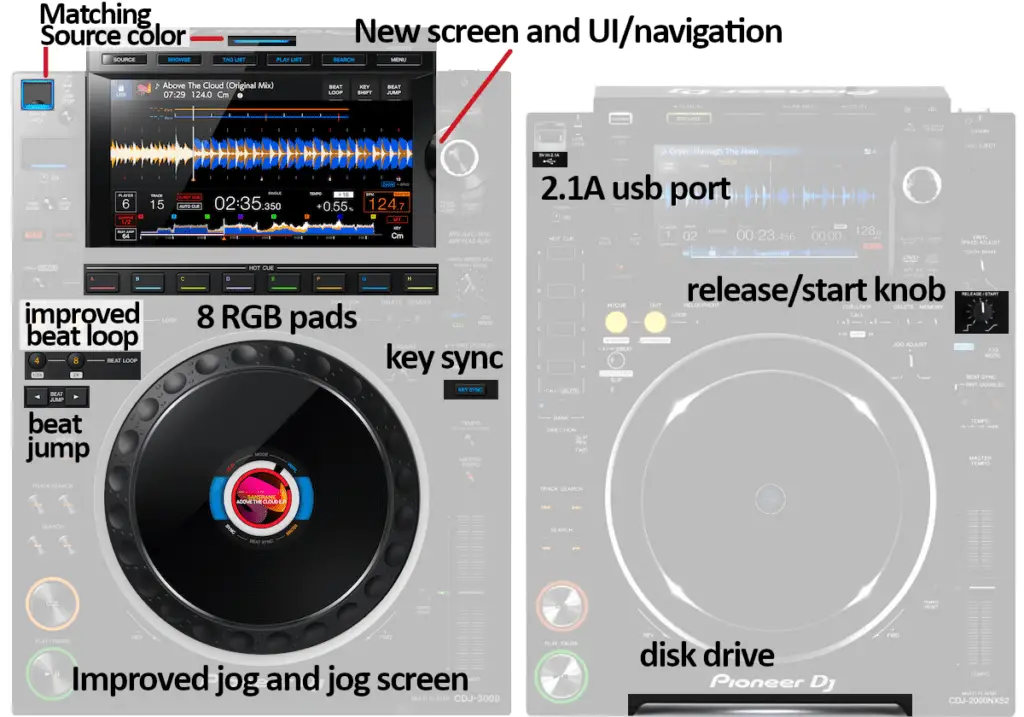
What are the main differences?
The main difference is the screen. Apart from growing in size, it is brighter and has a much better interface. Its bigger size allowed to put new functions that do not exist on the Pioneer CDJ-2000. Navigation is now more intuitive even with the additional features. The CDJ-3000 introduced two new great functions:
- Key shit and key sync.
- Previewing any part of a song even on a currently playing track.
I have crafted a table detailing all the main differences:
| Differences | Pioneer CDJ-3000 | Pioneer CDJ-2000 NXS2 |
|---|---|---|
 |
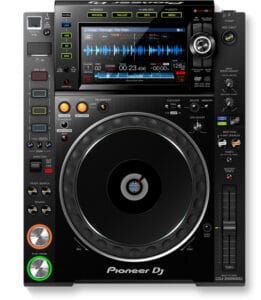 |
|
|
Screen + User Interface |
9 inch touchscreen with higher brightness | 7 inch touchscreen |
| This is the biggest evolution between the two. The change is not only in the size and brightness but also in its interface. The new CDJ-3000 is now way easier to use compared to the CDJ-2000NXS2. This is especially true for track navigation with the possibility to order any column by simply clicking on its header as you will do on a computer. The increased size allows showing multiple waveforms at once which is great for phrase mixing. The screen is not multitouch on both units. |
||
| Jog | 8.11 in, new technology, reduced latency | 8.11 in |
| The jog feeling has been improved on the 3000. It is also quieter when spinned. It feels like the ball bearings are no longer there. Pioneer says it also has a reduced latency. From the feedback of professional turntablists, the CDJ-3000 has a better feeling for scratching. | ||
|
Key shift + Key sync |
Yes | No |
|
Thanks to its improved processor, the CDJ-3000 can now shift the tone of a track to the key of your choice. That offsets all the notes of a song at once, changing its feeling. Pioneer has also introduced the “key sync” function as a complement to the regular BPM sync function. |
||
| Hot cues | 8 RGB buttons | 4 RGB buttons |
| Instantly start a song at a defined cue point. On the CDJ-3000 the hot cues have been moved to be just below the waveform for more clarity. Indeed the colors on the waveform match the ones on the buttons. | ||
| Pro DJ Link | Yes, with new features | Yes, but no previewing |
| The new CDJ can now show the waveform of another player on top of the current player for a better phrase matching. The CDJ-3000 has also new preview features like directly previewing any part of a song in the headphones while browsing (i.e. without loading it on a deck). On a track currently playing, you can also preview other parts of the song to anticipate a drop for instance. That’s also great for B2B when the 2nd DJ does not know the song you are currently playing. Please note that you need a DJM with a “link” button such as the 900 Nexus or the DJM-V10 to use this function. |
||
| Source LED | Yes | No |
| The CDJ-3000 has now an RGB led at the top of the unit showing a unique color for each source used. For instance, if on deck 1 I am using the USB stick of deck 2, then the deck 1 would be of the same color as the USB port of deck 2. It helps determine which USB sticks are being used at the moment. Therefore it is easier to determine which USB you can unplug and avoid mistakes. Great idea in my opinion! | ||
| Vinyl Start/Stop | 1 brake knob | 1 start knob + 1 brake knob |
| The CDJ-3000 only has one knob for the vinyl simulation adjustments for when the record stops. However, it is still possible to adjust the release/start on the latter but in the utility option menu. The CDJ-3000 has, therefore, the same functionally as on the CDJ-2000 but less directly. This is probably a choice from Pioneer to make room on the unit. In my opinion that makes sense because most DJ remove the release/start anyway to have an instantaneous play. |
||
| CD drive | No | Yes |
| The Pioneer CDJ-2000 Nexus 2 can play CDs, but no one ever uses those nowadays. | ||
| Dimensions W x H x D |
12.95 x 4.65 x 17.83 in | 12.6 x 4.46 x 16.31 in |
| The main change is the depth which is about 10% larger on the Pioneer CDJ-3000. That’s non-negligible. | ||
| Price | $2,299 (Amazon / Guitar Center) | $2,199 (Amazon / Guitar Center) |
You can see the difference in price is only $100.
The CDJ-3000 is also taller, so in order to apprehend the difference I believe a picture is the best:

One can see how the new screen is also brighter compared to the old CDJ-2000.
What are the improvements of the CDJ-3000?
On top of the new functions, the CDJ-3000 improves the CDJ-2000 Nexus 2 in many aspects. My favorite is the added buttons for beat jump and improved key change functionalities. Otherwise, the new player is faster in many aspects, such as loading a track.
Overall it’s a far greater experience, here are all the aspects that have been improved:
| Differences | Pioneer CDJ-3000 | Pioneer CDJ-2000 NXS2 |
|---|---|---|
| Beat Jump / Loop Move | Yes, dedicated buttons + more options | Yes |
| On the CDJ-2000 Nexus 2, this function was on the touchscreen-only. The CDJ-3000 additionally has two dedicated beat jump button. That makes the function always available and more organic than a touch screen. I personally love this addition. The CDJ-3000 also introduces new features on the touchscreen. Thus, there is a second page so you can change the beat length from 1/2 to 64 beats. |
||
| Key lock | Yes, improved thanks to the new MPU | Yes |
| The key lock is now more efficient thanks to the new processor, the “MPU”. The sound will therefore have fewer artifacts when the change of pitch starts to get big. | ||
| Beat loops | 2 physical buttons + touchscreen | 1 physical button + touchscreen |
| The new player has an additional button to launch an 8 beats loop directly. The other one, available on both players, is for launching a 4 beats loop. | ||
| Jog Screen | Yes, with more information | Yes |
| CDJ-3000 screen additionally shows the activation of the sleep mode, sync mode, and if the current deck is the master. Otherwise, the vinyl mode, the needle, and the CUE indicator are presents as on the CDJ-2000 Nexus 2. | ||
| Waveform color | Shades of blue, RGB, 3 Band | Shades of blue, RGB |
| CDJ-3000 now has the 3 Band color waveform introduced recently into Rekordbox. One color corresponds to the low frequencies, one to the mids, and one to the highs. | ||
| Track loading | Instantaneous | Small loading time |
| Thanks to the new processor, the song loads instantly. At least if the tracks were analyzed first on Rekordbox. Indeed, the players still not handle onboard track analysis. Browsing is also more smooth. | ||
All these improvements make the additional $100 of the CDJ-3000 worth it.
Screen changes
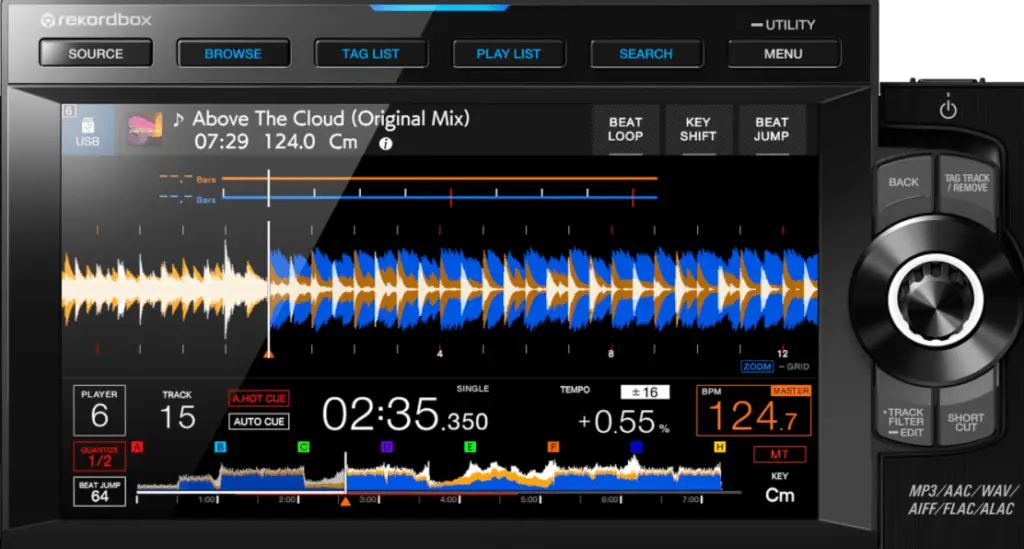
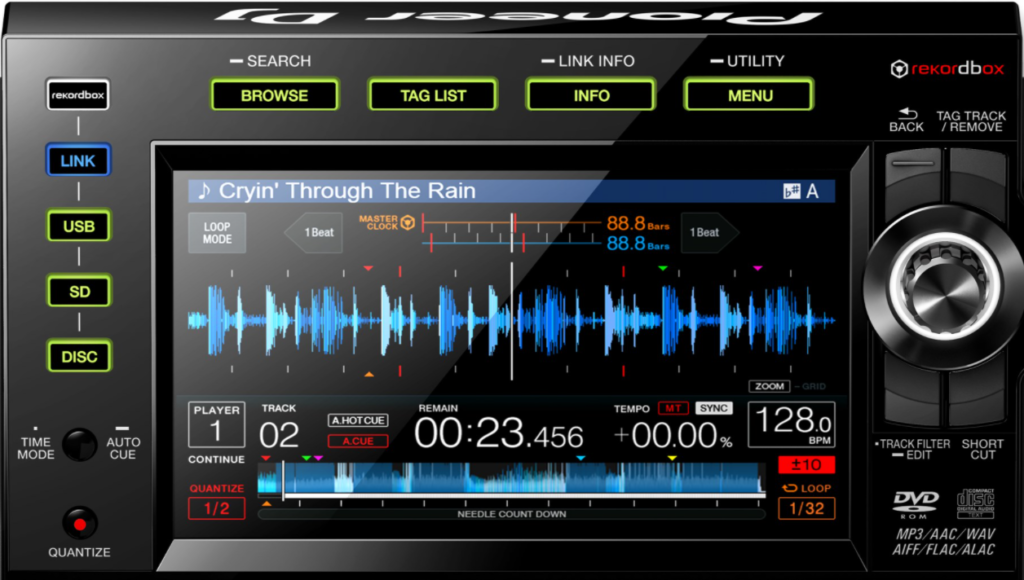
On the CDJ-3000, I like that the beat loop, key shift, and beat jump are all accessible in one corner. That makes the UI more simple and straightforward to use. The screen increased from 7 to 9 inches is also quite comfortable.
Audio quality: Is the Pioneer CDJ-3000 better than the CDJ-2000?
Now let’s have a look at audio quality. It’s an important aspect when looking at expensive gears like these ones. How does the CDJ-3000 compare to the CDJ-2000NX2 in terms of audio quality?
On paper this is what the specs tell:
| Audio | Pioneer CDJ-3000 | Pioneer CDJ-2000 NXS2 |
|---|---|---|
| Frequency Range | 4 – 40000 Hz | 4 – 40000 Hz |
| Signal-to-Noise Ratio | 115 dB | 115 dB |
| Distortion | < 0.0018 % | < 0.0018 % |
| Audio Output Level | 2.0 Vrms (1 kHz, 0 dB) | 2.0 Vrms (1 kHz, 0 dB) |
| Audio format | 24 bit, 96 kHz | 24 bit, 96 kHz |
| D/A Converter | Asahi Kasei DAC (AK44490EQ) | Asahi Kasei DAC (AK44490EQ) |
| Outputs | 1 RCA and 1 Coaxial (digital) | 1 RCA and 1 Coaxial (digital) |
| File Format | MP3, AAC, WAV, AIFF, FLAC, ALAC | MP3, AAC, WAV, AIFF, FLAC, ALAC |
| FLAC and ALAC formats are less common but have a better sound quality compared to MP3 and AAC while still having a reduced file size compared to WAV and AIFF. | ||
As you can see, many specs linked to audio are identical: same frequencies, file format, noise ratio, and digital to analog converter. However Pioneer put forward the CDJ-3000 has a better audio quality which is possible with the newly introduced “MPU”, their new processor.
Indeed, even though all the analogic hardware seems to have similar specs, the digital processing done by the processor does have an influence on audio quality. In particular, it improves the sound with the key lock on (master tempo function). Pioneer says it improved the key lock function which allowed him to introduce the new “key sync” function.
It does make sense since this function is dependent on your calculation power. Indeed it is possible to have a far better key correction, many music production software does that, but not in live! In audio, there is always a compromise to find between audio quality and latency.
On a CDJ the latency needs to be as low as possible for people to be able to scratch properly. Therefore the key lock algorithm was not the best available before to keep down latency. But with a new processor, you can have a better key lock algorithm while keeping the same latency!
To sum up, if you use both the CDJ-2000 and 3000 with no change in tempo or key, the audio quality is probably identical. However, as long as you change the pitch, the Pioneer CDJ-3000 should have a better sound quality. Thus the CDJ-3000 does have a better sound quality vs the CDJ 2000 Nexus 2.
Similarities between the CDJ-3000 and CDJ-2000 Nexus 2.
Here is a table showing where the CDJ-3000 and CDJ-2000NXS2 are similar:
| Similarities | Pioneer CDJ-3000 | Pioneer CDJ-2000 NXS2 |
|---|---|---|
| Wave Form Display | Zoom + Complete | Zoom + Complete |
| Has a zoomed waveform on the currently playing part of the song. + A complete waveform at the bottom of the screen to see the remaining time. | ||
| Phase Meter | Yes | Yes |
| Visually see if the beats within a bar of the two songs are in “phase” or not. In other words, allow checking if the bars are in sync. That’s better than syncing a simple beat. | ||
| Beat Sync | Yes | Yes |
| Reverse play | Regular + slip reverse by buttons | Regular + slip reverse by buttons |
| Scratch Mode | Yes | Yes |
| Slip Mode | Yes | Yes |
| Restart the playing at where the song should be without applying the recently used loops or effects. Makes the used effects much more natural because they don’t break the rhythm. Video explanation here. | ||
| Track Filter | Yes | Yes |
| Filter your library by BPM, key, rating, color and tags. Useful to find song matching what you are currently playing. | ||
| Tempo Range | +/-6, 10, 16, 100% | +/-6, 10, 16, 100% |
| The tempo range the pitch fader can cover. It can be adjusted down to 6% on both players for better precision. In that case, every step of the fader has a precision of 0.02%. | ||
| USB Storage Support | FAT, FAT32, HFS+ | FAT, FAT32, HFS+ |
| The storage format that the USB key or the external hard drive needs to be. Otherwise, the player will not be able to read it. Most USB keys are formatted in FAT32. The HFS+ is the apple format. Please note that NTFS, the windows format for hard drives, is not supported. So think of formatting your drive in the correct format when using Windows. | ||
| MIDI Control / HID Support | Yes | Yes |
| Connect your player to your computer to use it as a controller. The CDJ will control Rekordbox or other compatible DJ software. Thus, you can play directly with your entire computer library. | ||
| Pro DJ Link | Yes | Yes |
| Connect several Pioneer units together to share information. Allow you to share songs between players, sync the songs together, etc. The CDJ-3000 has many more functions allowed thanks to the Pro DJ Link though (see differences table above). | ||
| Audio Sources | Mac, Windows, iOS, Android, USB storage, SD cards | Mac, Windows, iOS, Android, USB storage, SD cards |
| Weight | 12.13 lb | 12.57 lb |
Back
Looking at the back, you can see that the CDJ-3000 and CDJ-2000 Nexus 2 have the same connectivity:
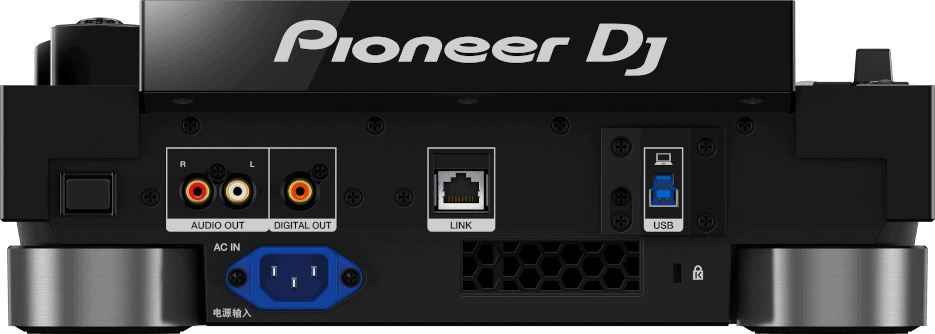
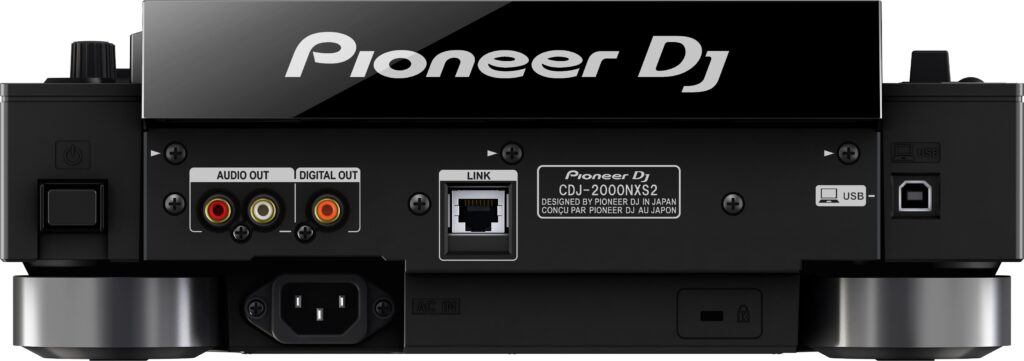
The only difference is that the CDJ-3000 has locking capabilities on the USB and power ports. They prevent the unintentional unplugging of the unit.
To sum up
Functionalities:
In terms of functionalities, the Pioneer CDJ-3000 has a few more possibilities: key shift and key sync, advanced previewing, additional hot cues, and beat jump buttons.
Layout:
In terms of layout, the CDJ-3000 is a bit more crowded due to its additional features. But that’s not to the point the unit is hard to use. Pioneer always make sure their flagship has a good flow.
The screen is bigger and so is the unit, which is 10% taller. Otherwise, the traditional Pioneer layout is there: the jog size is identical, the traditional loop buttons are here, as well as the play and cue buttons.
The biggest change in terms of “layout” is in the interface of the screen. The CDJ-3000 UI had a small lift for easier use.
Regarding the audio quality:
The audio quality overall should be quite similar. The CDJ-3000 is expected to have a slight advantage in quality when using key shift features or the “key sync”. That’s thanks to the new processor that allows Pioneer to put better algorithms for key changes. Otherwise, the audio quality should not be that different between the units. Indeed both units have the same audio specs and file formats.
Regarding build quality:
Both units are flagships of their time, so built quality should be identical on both. Pioneer says the CDJ-3000 is studier but that’s difficult to prove at launch. Only time will tell after long extensive use. The jog wheel internals has been redesigned for instance.
Price:
The Pioneer CDJ-3000 is sold at $2,299.
You can find it online on Amazon and Guitar Center.
The Pioneer CDJ-2000 Nexus 2 is sold at $2,199.
You can find it online on Amazon and Guitar Center.
Please consider using the links I provide here. They help to maintain this site thanks to affiliate commissions. That comes at no additional price for you and it helps me a lot!
Why chose the Pioneer CDJ-3000 over the CDJ-2000 Nexus 2?
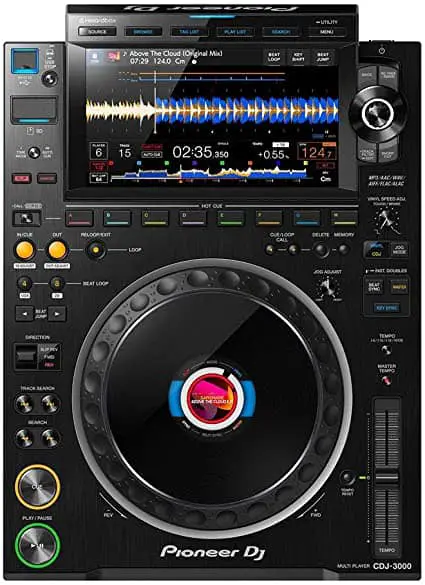
Considering the CDJ-3000 is an improved CDJ-2000 Nexus 2 with new features for only $100 more, I don’t see any reason not to chose the CDJ-3000. The removed functions from the 2000 were features barely used by anyone.
The new screen is awesome and improves a lot the workflow. The new possibility to change the key of songs is like unlocking a completely new universe. And it goes without mentioning the new jog wheel which feels great! Otherwise, the CDJ-3000 introduces many small improvements here and there that makes it already a good alternative.
In fact, it is kind of strange that Pioneer did not discontinue the CDJ-2000 Nexus 2 considering such a small price difference. I believe they keep it in their catalog for people who still want to use CDs. But if the sales go down in the future on the Nexus 2, I would not be surprised they finally discontinue it.
Why chose the Pioneer CDJ-2000 Nexus 2 over the CDJ-3000?
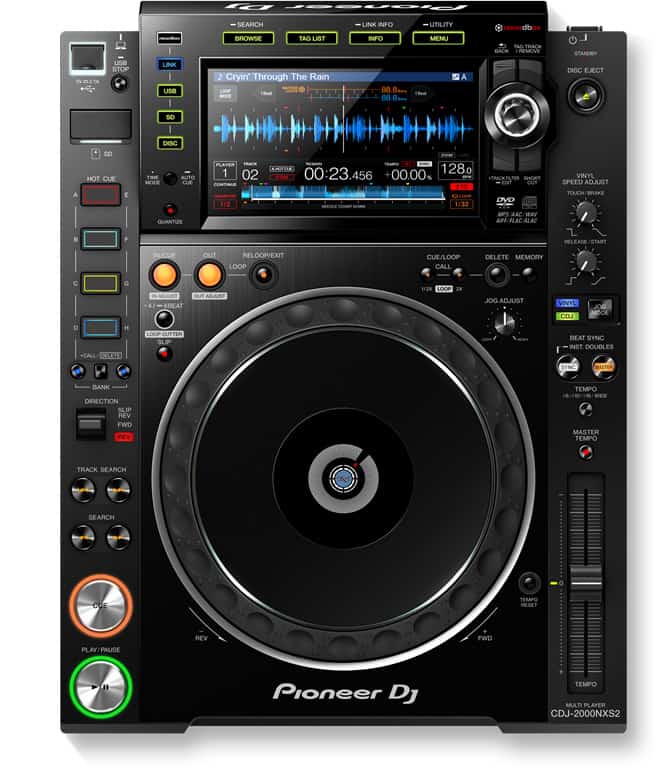
There are no many reasons apart if you want to use CDs. If you have a chance to come across a second-hand CDJ-2000NXS2 at a bargain price I would say to go for the 2000.
Having a CDJ-3000 is great if you pair it with a recent DJM like the 900 Nexus or the V10. Indeed, you need these mixers to unlock all the CDJ-3000 new functionalities. Therefore, if you don’t own these mixers and have the chance to buy a cheap CDJ-2000NXS2, go for it!
In short, I wouldn’t buy a CDJ-2000NXS2 at the full price of $2,199 but I would consider it if cheaper.
Is there a good alternative to the CDJ-3000 and CDJ-2000NXS2?
The best alternative for the Pioneer CDJ-3000 is the Denon SC6000. It comes at $1,499 with many additional features:
- Dual-layer: Mix 2 songs on the same player
- Performance pads: hot cues, loops, rolls, and slicer whereas the CDJ-3000 does only hot cues.
- Multitouch screen with glass protection. CDJ-3000 is only single touch with no glass.
- Inbuilt track analysis: not available on CDJ-3000 = needs to be analyzed on Rekordbox beforehand.
- Hard drive slot at the bottom.
- Inbuilt Wifi streaming: Stream directly from Tidal, Beatport and Soundcloud.
- Loop encoder: A more intuitive way to create loops.
- Full track buffering: if wifi stops or the USB key is disconnected, the track will go through the end without stopping.
- Accept SDXC cards.
If you are interested, I have a more complete side by side comparison with the CDJ-3000 and the SC6000 here.
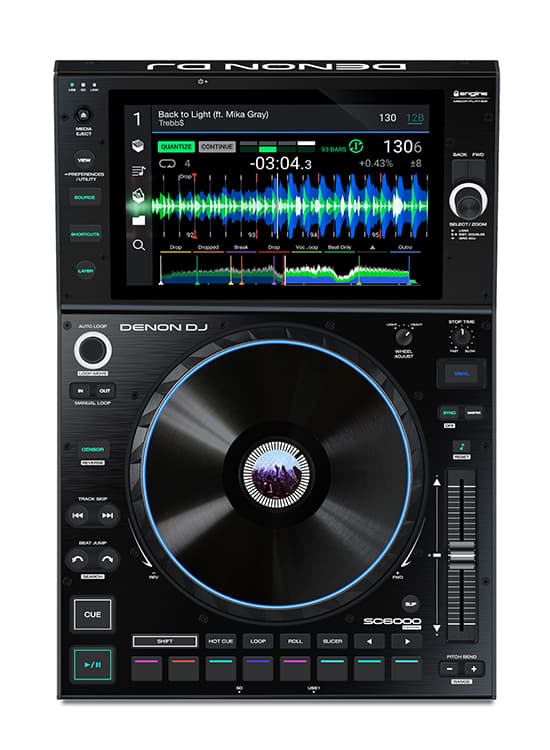
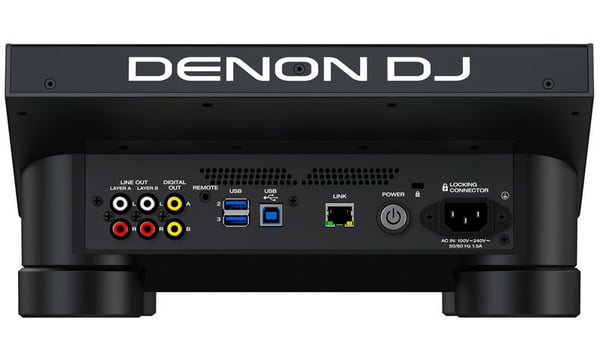
Why is it so cheaper if it has so many additional features? Well, Pioneer is a club, and festival standard plus is known for its robustness. They may abuse this position because they know that every club is equipped with Pioneer. DJs are used to their layout and thus clubs are afraid to make the change.
On the other hand, Denon is like an outsider, it needs to lower the prices in order to take market shares. At least for the non-club owners. They can bet on not making much money at the beginning as long as they manage to make their place on the market.
In my opinion, the last Denon products are great innovative products. They seem robust as well. Therefore I believe the SC6000 are great for “bedroom DJs” and the CDJ-3000 great for clubs. The SC6000 now accepts Rekordbox playlist so it is perfectly acceptable to prepare tracks on Rekorbox, play at home on the SC6000, and play in clubs on the CDJ-3000.
